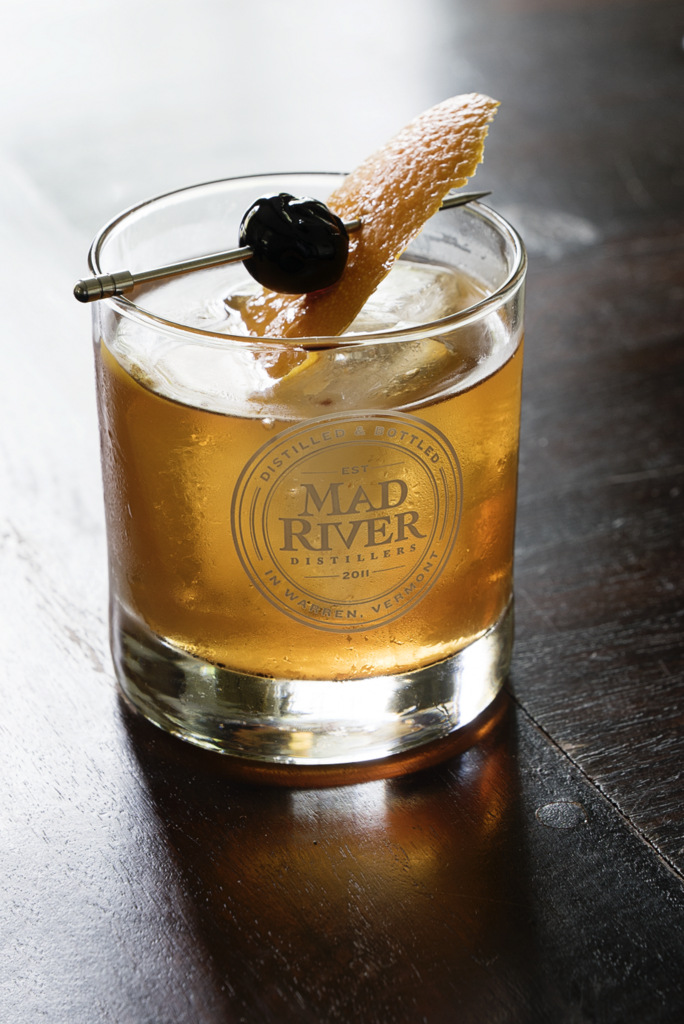What are Bitters?
“So what’s the deal with all those little bottles?” a gentleman asks in a hushed voice leaning across the copper bar top in between sips of his Mad River Rye Manhattan.
“Bitters” I whisper back.
I point to the shelves lined with obscurely sized, shaped, and colored bottles, “We sell bitters from all around the world” now speaking at a higher decimal level.
“So what exactly are bitters?” he asks loud enough to catch his neighbors attention.
“Bitters are like spices for cocktails, a dash or two can elevate a cocktail to something beyond just the sum of its parts”, is the gist of my normal response.
For the majority of our patrons this serves as a satisfactory explanation, but occasionally a curious customer such as this gentleman, will push for more, to ponder between sips.
Sympathizing with their curiosity and relishing the opportunity to further the knowledge of bitters in the world I often jump into a long winded version of the following.
Bitters, like many things alcoholic, have roots in medicine, or what might be more accurately described as faux medicine. They are made by infusing or macerating roots, barks, fruit peels, seeds, spices, herbs, and other botanicals in high proof alcohol or glycerin.
Bitters were often billed as cure-alls for ailments ranging from headaches and indigestion, to malaria. They were consumed not in a dash, but gulped down as medicine. These “medicinal” tinctures made from flavoring agents like gentian root, cinchona bark, orange peel, anise, clove, and other spices were said to have magical healing powers.
In the 1850’s America saw a bitters boom not dissimilar to what we have seen in recent years, but at this time bitters were still considered medicinal. The burgeoning bitters industry was being spurred on by both social and political forces.
The temperance movement was making inroads in their quest to deem social drinking as unacceptable. However, proving that cognitive dissonance is not a modern phenomena, the daily consumption of bitters for “medicinal benefits” was normalized despite the high alcohol concentration.
Additionally, the government was levying higher taxes on alcohol sales, but bitters being considered a non-potable item, were exempt from the higher taxes and therefore cheaper option for one to get their fix.
Soon enough hundreds of bitter varieties were available, and as the selection grew so did the marketing campaigns and dubious promises about the power of bitters. The habit of taking a morning drink for health reasons only seems to have foreshadowed the pill popping country we would eventually become.
So how did some 19th century “snake oil” weave its way thru history to become an essential ingredient in any serious bartenders arsenal?
What many people don’t realize is that bitters were an essential part of the original cocktail, defined as; “a stimulating liquor composed of spirits of any kind, sugar, water, and bitters”. At the time the word cocktail referred to a specific sort of drink, alongside other varieties like juleps, toddies, smashes, and fizzes. Today that definition would more aptly apply to an Old Fashioned, as the word cocktail has become a more general term for any variety of mixed drink.
Bartenders rely on a bottle of bitters the way a chef relies on salt. In recent decades these old drinks and their ingredients have been brought back to life as the art of the cocktail has been revitalized. As we continue to glamorize the history of these drinks and bring them into the modern world, bitters have tagged along, as a vital, but at times underappreciated sidekick.
The bitters commonly dashed into a Bourbon Manhattan are considered non-potable, due to their high alcohol content and concentrated flavor. These days there has been an explosion in the variety of non-potable or “cocktail bitters” on the market and behind the bar. The most famous and ubiquitous examples of these would be the yellow topped Angostura bitters from Trinidad and Tobago, Peychauds from New Orleans, and Regans Orange.
Other popular brands include Bitter Truth, Fee Brothers, Bittermens, Dr. Adam, and Scrappys. We happen to sell them all and many more in our tasting room.
Bitters designed to be sipped instead of dashed are considered potable bitters. They are commonly consumed before or after a meal to stimulate appetite or ease digestion. Well known examples of potable bitters would be Campari, Fernet Branca, and Jagermeister. These often include added sugar to bring some balance, and increase their sippability.
Humans like many animals are hardwired to be averse to bitter flavors. It's often a warning signal that you’re about to ingest something toxic, but bitter can also be an alluring taste found in popular foods like grapefruits, chocolate, eggplant, coffee, and various herbs. It offers a sort of cleansing taste that spurs you on to the next bite (or sip).
Many people assume that the purpose of bitters is to simply make a drink bitter. While understandable, this isn’t an accurate description of the essential role bitters plays in elevating, and deepening flavors in a cocktail. Bitters can reduce sweetness, slice thru richness, meld disparate ingredients, as well as add an aromatic spiciness. All of that from a couple drops from a little bottle!
“What do you think?” I ask as the gentleman sits back into his bar seat, appearing to be deep in thought and finishes the last sip of his manhattan. He starts to nod approvingly and says “I think I need another manhattan”. As I walk down the bar to prepare his drink he calls half-jokingly “and don’t skimp on those bitters!”
Written by Neil Goldberg





